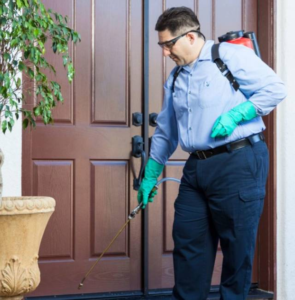Search engines work to bring users the most relevant results for their queries. To do this, they index billions of web pages, comparing them to the search query to deliver accurate, unbiased results.

SEO Modesto CA is a powerful marketing channel that allows brands to grow their visibility, clicks, traffic and authority. This complete guide to SEO will cover everything you need to know to become an expert.
Keywords are one of the most important elements of SEO. They help marketers understand what searchers are looking for and make it easier for them to find content that is relevant to their needs. As a result, they are essential for any digital marketing strategy. Keywords can range from single words to intricate phrases, and they must be used strategically in order to have a positive impact on your SEO efforts.
When it comes to selecting keywords, it’s important to consider your audience’s intent and language. A good place to start is by using Ahrefs’ Keywords Explorer, which provides over two million keyword ideas complete with monthly search volumes, average cost-per-click (CPC) for paid ads, and a variety of other useful metrics.
Once you’ve found some potential keywords, it’s important to prioritize them based on relevance and authority. You’ll also want to consider how difficult it will be to rank for each keyword. This will help you avoid spending time and money on keywords that will have little impact on your business.
Choosing the right keywords will help you create effective content that will drive traffic and conversions. Ideally, you’ll find keywords that have high search volume and low competition. This will ensure that your content is visible to the most people possible.
In addition to focusing on the right keywords, it’s important to optimize your content for readability and user experience. To achieve this, you should use the keywords in titles and subheadings, as well as in the body of your content. You should also aim for a natural keyword density, which means that the keywords should appear 1-2 times per 100 words.
While short tail keywords tend to have higher search volumes, long-tail keywords are more specific and have lower competition. These keywords are great for targeting customers at every stage of the buying cycle. For example, a search for “toaster” will return a lot of results, but a search for “4 slice chrome toaster” will produce more precise results.
Ultimately, the most successful businesses will have a deep understanding of their audiences and what they’re searching for online. This insight will enable them to craft content that aligns with their intent and speaks in a way that’s unique and compelling to the audience.
Content
SEO content is writing that’s optimized to appear prominently in search engine results pages (SERPs) and attract high-quality, unpaid traffic. It should be helpful and relevant to users’ search intent, and be well-written, informative, and free of grammatical errors. It should also be updated regularly to stay fresh. Unlike paid ads, which can be costly and not always provide the desired results, on-page SEO content can be effective at growing organic visibility and increasing website traffic.
Creating and optimizing SEO content requires a combination of knowledge of marketing tactics, data from search engines like Google, and user research. It’s important to understand your audience’s wants and needs, as well as the keywords they use when searching for information on your topic. This will help you identify SEO content ideas that are relevant and can feasibly rank in the SERP.
There are many different types of SEO content, including blogs, videos and infographics. Each type of content has its own unique benefits and can contribute to your overall SEO strategy. But it’s important to create the right mix of content types to achieve your goals.
Varied content caters to wide audiences and helps you optimize for more ranking factors, improving your overall SEO performance. It can be difficult to keep up with all the latest trends and best practices, but it’s essential to update your content frequently to remain competitive in the marketplace.
On-page SEO can be challenging for businesses to scale, especially if they have numerous product and service pages. It’s also important to remember that on-page SEO is only one part of the equation; a successful digital marketing strategy is comprised of multiple components, including link building, metadata and site speed.
In order to rank well in search engine results pages, you need to focus on a variety of factors, including the quality of your content and its location. Using the right keyword research tools can help you identify the most popular keywords and find opportunities to target. However, it’s important to avoid keyword stuffing, which can have a negative impact on your search engine rankings.
Link building
Link building is an important part of SEO. It helps search engines find your content and determine how relevant it is to a certain keyword. It also helps other websites link to your site, which can increase the number of visitors and leads. However, it’s important to understand that link building is not a stand-alone activity. Rather, it should be integrated into other marketing activities. In this video, Moz’s Kavi Kardos explains how to build links for your business using a holistic approach.
To make your SEO strategy more effective, you need to focus on acquiring high-quality links that are relevant to your business and audience. This will ensure that your website is seen as a legitimate endorsement by search engines. Moreover, it will also help you rank higher in search engine results pages (SERPs) and drive more traffic to your website.
The first step in a successful link building campaign is to create a list of prospects. You can do this by searching for keywords in your industry and then finding relevant websites or directories. Once you have a list, reach out to the webmasters of those sites and ask for a link. You can also use Ahrefs’ URL Rating and Domain Authority to assess the quality of a website’s backlink profile.
When it comes to generating links, you’ll need to think beyond the usual tactics. For example, creating a piece of content that answers a common question or provides valuable information will naturally attract links. Similarly, conducting thorough research on crucial industry concepts will position you as an authority and invite natural links.
In addition to creating linkable assets, you should also promote your content on social media to gain visibility and brand awareness. In this way, you’ll be able to generate more links and improve your domain authority. Moreover, you can use the Ahrefs’ Domain Authority and Brand Authority metrics to compare your results with those of your competitors.
In the past, link building was based on PageRank, which was an indicator of how popular a particular page was. However, this metric was abused by many SEOs, and Google began to devalue it. Today, a variety of criteria are used to evaluate a page’s link profile, and it is more important than ever to use best practices in link building.
Analytics
Using data analytics to shape SEO strategies can maximize the impact of marketing efforts. It can help shape goals, identify opportunities, and track metrics. However, data analytics can be overwhelming if you don’t know where to start. A thorough SEO analysis can provide valuable insights that you can use to improve your website’s visibility and search engine rankings.
First, you need to define your SEO goals and what success looks like. These should be SMART (specific, measurable, achievable, relevant, and time-bound). Then, you can create a list of key performance indicators that align with these goals. Ideally, these KPIs should be tracked over time to see how your campaign is performing.
For example, if your goal is to increase organic traffic, you should focus on keywords with high search volumes and low competition levels. Then, you should analyze your competitors’ strategies to understand what is working and where the opportunities are. SEO analytics tools like Ahrefs and SEMrush can help you understand the effectiveness of your SEO strategy.
Another important metric is the page load speed of your website. Ideally, your site should load within three seconds or less, which is the average expectation of users. Using a tool such as GTmetrix can help you determine your site’s speed. If you find that a particular page is slowing your site down, you can make changes to improve its loading speed.
Finally, you should analyze your content and optimize it for user intent. This will ensure that your content is resonating with searchers and driving traffic. Then, you can make improvements to your content, such as updating outdated information or optimizing it for mobile users.
SEO analytics is an essential part of any digital marketing strategy. Using these tools can help you drive organic traffic, identify opportunities, and improve your website’s search engine ranking. And if you’re an agency, having an automated reporting solution like DashThis can save you valuable time and headaches. This software collects all your SEO tools’ data and combines it into a single report, so you can get back to your clients with confidence.








